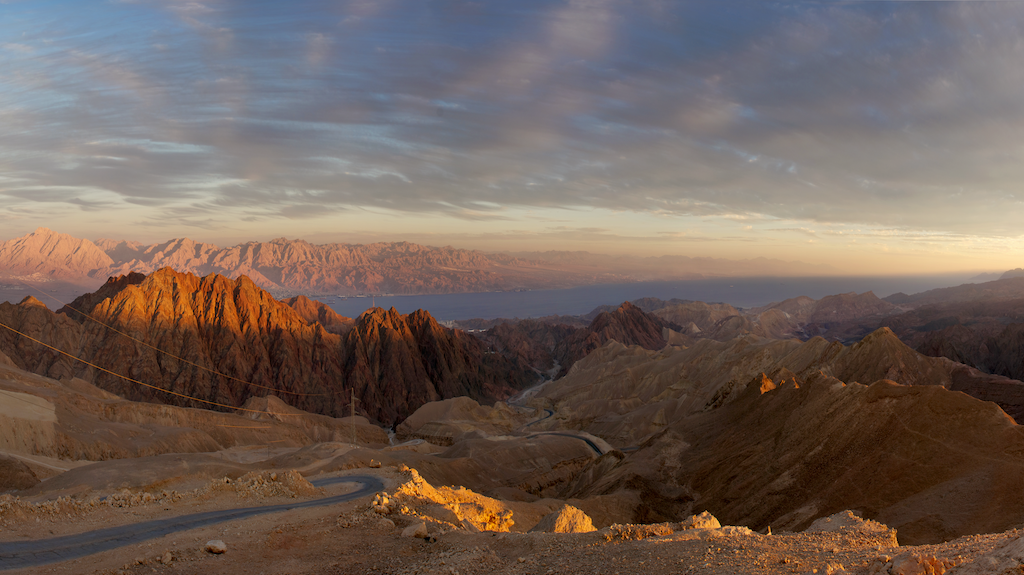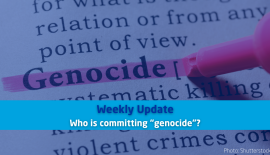Biblical Borders of Israel (part 1)
On the political stage of the Middle East, I have never seen anyone ask about the biblical borders of the Promised Land. I know of no politician who pursues an agenda of translating prophecies of the Bible concerning the borders into political reality.
However, I come across Christians with the question of when the state of Israel will reach its biblical borders. And in past years, secular journalists and political analysts have given public thought to whether certain Israeli politicians dreamed of a ‘greater Israel within biblical borders’. It is, therefore, appropriate to outline what the Bible actually says about the borders of the Promised Land.
The land is limited
First of all, it should be noted, that the land to which the Hebrew people were led by Moses was never borderless. It always had its limits. Egypt, in the southwest of the land of Canaan, is as obviously a foreign country from a biblical perspective, as was Assyria in the northeast. The fact that the Promised Land is limited may also be recognised by the acknowledgement that it can become too small.
Consequently, the immigrating people of God may not simply take whatever they like when they think they are capable of it. The Bible does not support international law based on majority decisions, nor does it accept as rightful owner whoever prevailed in a conflict as the more successful.
The creator sets borderlines
According to the Bible, it is the one, true, living God who distinguishes between language groups and ethnic entities (Genesis 11:9), causes nations to migrate (Amos 9:7) and set the limits of the peoples.
A crucial factor in this is people’s obedience to the Word of God. Therefore, from a biblical point of view, the borders God sets for a nation are never an unchangeable ‘Law of the Medes and Persians’ carved in stone.
The borders of a country depend on the relationship of the respective people with the living God. Their course may, therefore, indicate something about this relationship.
What belongs to the Promised Land
The Bible thinks from the centre. Beginning with the story of the patriarchs up to the New Testament, it is clear that the centre of the Promised Land is Zion, the city of Jerusalem. The prophet Ezekiel calls this city the ‘navel of the land’ (Ezekiel 38:12). Jerusalem is the place that the Lord has chosen from all the tribes of Israel.
Jerusalem is located on a mountain ridge that stretches north-south and reaches a height of over a thousand meters above sea level. In the Bible, it is mentioned as ‘mount of the Amorite’ or ‘Mountains of Israel.’ South of Jerusalem is Judea, with its capital Hebron. North of Jerusalem the ‘Land Benjamin’, the ‘Mountains of Ephraim’ or later ‘Samaria’, with its centre Shechem, present-day Nablus. Mt Carmel (Jeremiah 50:19) forms an extension of this mountain range towards the northwest.
Seen from Jerusalem to the west, the mountainous region declines to the hilly country, the ‘shefelah’ in Hebrew. This is followed by the coastal plain and the natural and therefore never controversial western border of the Promised Land, the Mediterranean, also known as ‘Sea of the Philistines’ or ‘the Great Sea’.
To the east, the central Israeli mountains drop sharply into the Syrian-African rift valley, which is the lowest point on the earth’s surface at the Dead Sea at more than 400 meters below sea level. South of the Dead Sea, the ‘Aravah’ separates the Negev desert in the west from the Edomite Mountains in the east and extends to the northern tip of the Red Sea, wherein our time the Jordanian town of Aqaba and the Israeli resort town of Eilat are within sight of each other.
From the foot of Anti-Lebanon mountain ridge, the southern tip of which is Mt Hermon, the river Jordan flows through the Sea of Galilee from the north towards the Dead Sea, thereby forming a natural eastern border. In biblical Hebrew, the Dead Sea is called ‘the salt sea’ or ‘the eastern sea’.
The Negev desert is a natural border at the southern end of the Promised Land, which is sometimes referred to in the Bible as the ends of the land’. This borderline is flexible depending on weather conditions and
technical skills of the people who live in that part of the country. In Solomon’s time Ezion Geber is mentioned, a port town on the Red Sea in the area of today’s Eilat.
In the north and east, geographical and climatic conditions offer fertile cultivated land – and consequently cause for confusion, discussions, friction points and armed conflicts. Therefore, it is especially in the north and east that there have been many changes in the borders of the Promised Land, due to the relationship of the people with their God. The Bible alludes many times to these natural geographic and related climatic conditions.
The East Bank of the Jordan
Originally the areas of the tribes Edom, Moab and Ammon were foreign lands untouchable for the Hebrews. After leaving Egypt, God had explicitly told them concerning the territory of the Edomites: “I will not give you anything of their land” (Deuteronomy 2:5). The same was true of the lands of the Ammonites (Deuteronomy 2:19,37) and Moabites (Deuteronomy 2:9). Therefore, the area east of the Jordan was considered ‘abroad’ in the book of Ruth (1:1).
However, that changed already in the time of Moses. The area ‘from the Arnon up to Mt Hermon’, the territories of Moab and Ammon, but then especially the ‘Land of Gilead’ and Bashan (Jeremiah 50:19), today’s Golan Heights, were added to the settlement areas of the Israelites. The prophet Obadiah even foresees Israel taking possession of the ‘mountains of Esau’ (Obadiah 19).
The expansion of the country of Israel ‘from Dan (at the foot of Hermon) to Beer Sheva (in the northern Negev)’ is proverbial in Biblical language. From the very beginning, however, Mount Lebanon, the area ‘where you reach Hamath’ (today the city of Hama in Syria), and ‘up to the Euphrates’ were mentioned as the northern border of the Promised Land.
Republished with permission. This article is the first instalment of a tw0-part series. The second article will be published in August.




